The famous Ephesus Library was situated to the south of the Agora. This elegant monument was built in A.D. 135 by Julius Aquila In memory of his father, Celsus Polemaeanus of Sardis, Roman Senator and Proconsul of the province of Asia.
After passing through a marble-paved courtyard twenty-one meters wide one reaches the main reading-room by nine wide marble steps. There are four bases for statues at the top of the staircase The floor of the main reading room is built on arched vaults and the inner and outer walls are separated by a corridor, thus protecting the library from damp.
The walls and floor of the room were completely faced with colored marble. Across the main reading room there was an exactly placed niche for offerings; to the right and left of the round niche and on the side walls were square niches containing cupboards to hold the rolled manuscripts. On the front of the Library of Ephesus there was a two-storied gallery.
A section sixteen meters high was very richly decorated with a raised column, door ornaments and sculptural architectural monuments, carving and decoration. These carvings are to be seen in the Vienna Museum.
In a burial chamber in the lower part of the library can be seen a decorated white marble tomb in which Gaius Julius Celsus Polemaeanus was buried. The life of Celsus is related in Greek and Latin on the bases of the statues on each side of the library staircase.
History
The Library of Celsus was comissioned by the Consul Julius Aquila as a mausoleum for his father, Julius Celsus Polemaeanus, Roman governor of the Asian Provinces. It may be that Celsus was granted heroic honors, which would furthur justify the expense.
The monument was constructed between 110 and 135 AD, after which Celsus was buried in a niche on the right side of the back wall.
With a few centuries of its construction a fire destroyed the reading room and the library fell into disuse. Around 400 AD, the courtyard below the exterior steps was converted into a pool. The facade collapsed in an earthquake in the 10th century.
The Library of Celsus was raised from the rubble to its present splendid state by F. Hueber of the Austrian Archaeological Institute between 1970 and 1978.
What to See
Located next to the south gate, the Library of Celsus is 21m wide and over 16m high with a 2.4m-deep portico. The mausoleum-library originally had three stories, with galleries in the upper two stories.
Scrolls and codexes were stored in the niches, dispensed by a librarian. In total, 30 bookcases held about 12,000 scrolls. The reading room faced east in order to take advantage of the best light.
The lower niches of the facade contain four statues, which are through to represent Wisdom, Knowledge, Destiny, and Intelligence. These are replicas of the originals that are now in Vienna.
Latin and Greek inscriptions can be seen among the ruins of the library.
Quick Facts
- Names: Celsus Library; Library of Celsus
- Type of site: Mausoleum
- Faith: Roman
- Status: Ruins
- Dates: 110-35 AD
- Architecture: Classical
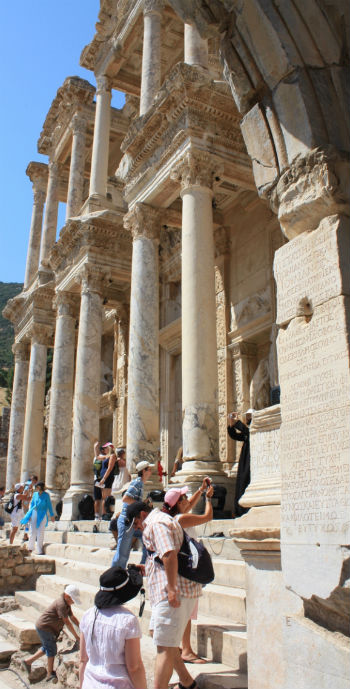
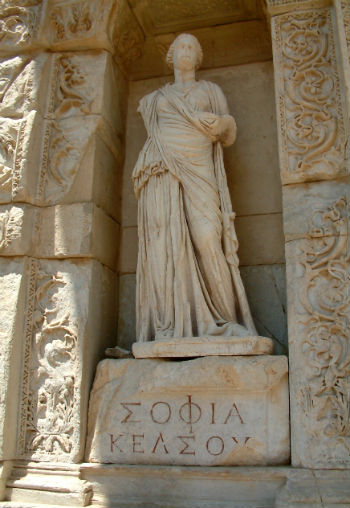
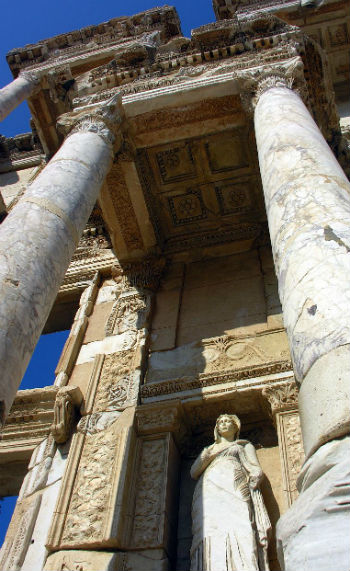
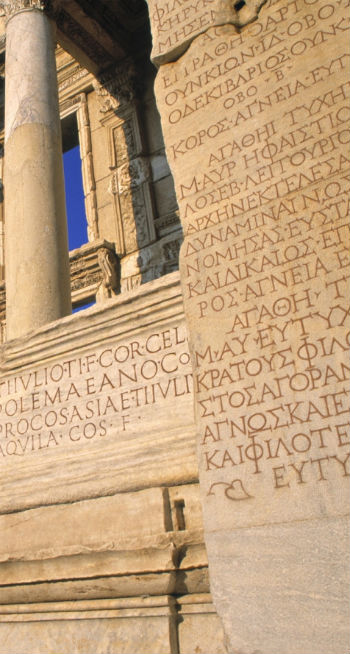
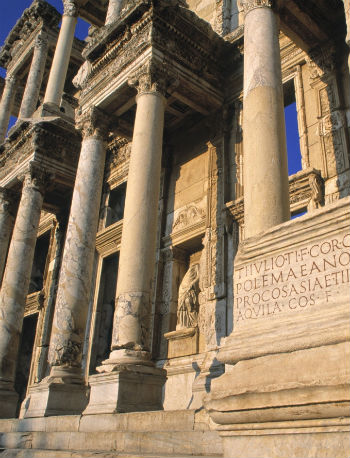
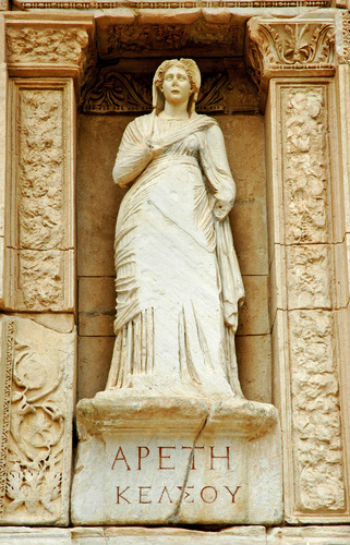
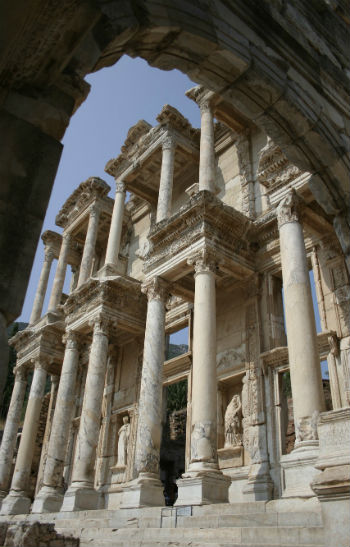


I just could not believe my own eyes it moved me to tears.You must spend time to go inside and feel just how cool it is .They built it like that to keep the scrolls cool.
This three-story, ornately-sculpted library façade is one of the most beautiful structures now in Ephesus. It was built in 117 AD, to additionally serve as a monumental tomb from a son to his father, the then-governor of the province of Asia.
Absolutely amazing architecture and building skills considering it was built more than 2000 years ago.
We really enjoyed Ephesus and this was easily the most impressive structure that is still standing there, which is why it is what you see on all the promotional material for Ephesus.
It is hard to believe that man was as civilized as he was back in these ancient times. It is a central focal point of the city.
It is amazing to see the remainings from a library 2000 years old! Julius Caesar, Cleopatra, and God knows who else, was at the same place where I was standing. This is a peace of history you can not find anywhere else in the world. Walk down the "main street" with pavements of mosaic and feel history embrace you. Fantastic!
This is a wonderful place and well worth visiting. Having visited lots of ancient sites over the years, this one is so impressive, it has to rate as one of my all-time favourite places. The whole site is amazing: there's Ephesus' ancient Parliament, temples, statues, entrance to the ancient market place and after these one comes to the Ampitheatre.
Most travellers recognise the reconstructed Celsus Library as the face of this once grand city. Ephesus must have been such a drawcard in ancient times and many of the big names in history made this town their own. You reach the library by travelling down the Marble road, itself a marvel of construction and interest. Imagine travelling over marble roads…
Wow! Nothing prepares you for the magnificence of the Library, what a sight it must have been before the cities destruction.
There is so much to see and take in around the Library, don't rush you're time here.
Do not miss, great to take pictures. Inside the ruins of Ephesus. Great site. I felt as I if I had traveled back in time.